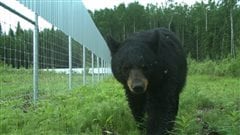Your hosts this week, Wojtek, Lynn, and Marc
Listen
Canada’s extractive industries, mining for example, are active in countries around the world. They also do not always have a good reputation abroad and in fact have had many charges of human rights abuses levelled against them.
The Federal government has just announced a new strategy to improve that reputation. its called an enhanced corporate social responsibility strategy and that for “the first time, the Government of Canada’s ‘economic diplomacy’ [would be] conditional on a Canadian company’s alignment with the enhanced CSR strategy.”
An acitivist watchdog group, Mining Watch Canada, says however the new policy, while of good intent, lacks teeth.
Wojtek Gwiazda spoke about the new government strategy with Catherine Coumans, Research Coordinator, Corporate Responsibility, at Mining Watch Canada.

There is a worrisome new health statistic, and it concerns mostly young people
It seems that in the past year there have been over 2,000 young people admitted to hospitals in Canada after they deliberately harmed themselves.
The practice is called “cutting” and it seems more teenage girls than boys are doing it.
Lynn spoke to Dr. Michael Korenblum, a psychiatrist and professor at the University of Toronto to find out why young people are deliberately hurting and scarring themselves.

Caribou herds across Canada are in decline, whether they be the Arctic “barren-grounds” tundra Caribou, Peary Caribou or the woodland Caribou.
In northern Alberta there are about 18 separate woodland Caribou herds. Woodland Caribou do not migrate per se, but do move around a large range area. All Alberta herds are in decline but at various rates. The shy animals are losing habitat as industrial especially from oil and gas mining, drilling and exploration activites. The many roads and pipelines cutting through the forest has made it easier for wolves and bears to move into the Caribou areas causing further decline. In one case, no young have survived in the past two years.
An Alberta biologist has come up with a simple plan. Get the pregnant females into a vast pen of 200-400 square kilometers where a giant fence will keep predators out until the calves reach one year of age and have a much better chance of escape from predators and survival in order to boost herd numbers
Marc spoke with University of Alberta professor Stan Boutin.







For reasons beyond our control, and for an undetermined period of time, our comment section is now closed. However, our social networks remain open to your contributions.